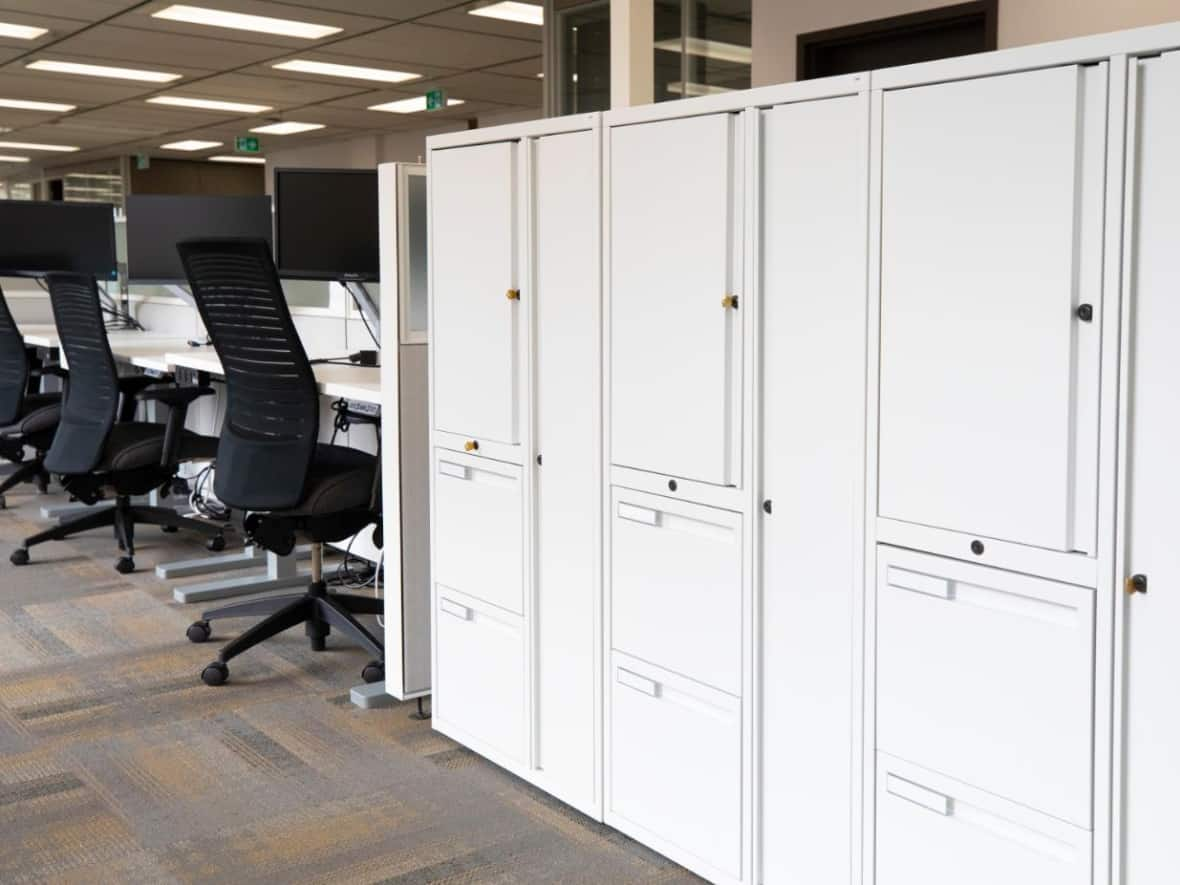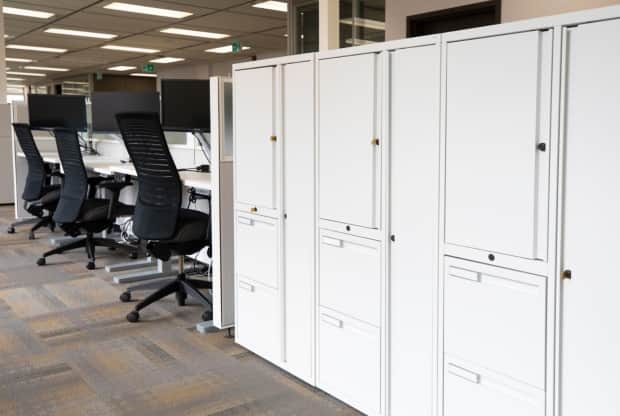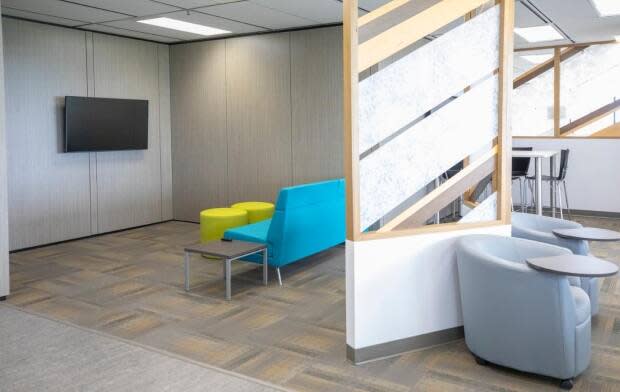Federal workers return to the office — but not the one they left

Federal public servants returning to the office after years working from home are adjusting to a new emphasis: shared work spaces, rather than a cubicle to call their own.
This hybrid work model is shifting tens of thousands of employees back to in-person work a few days a week. With it comes a host of complications, from making sure they have the right technical hookups to organizing schedules so team members can truly be face-to-face.
Unions have pointed to "chaos," saying there aren't enough desks and that some employees have even worked on the floor.
But while the federal government went on a hiring spree during the pandemic — core departments grew by 17,600 people from 2019 to 2022 in the capital region alone — the change in office style isn't due to a lack of space but rather a rethink that was already in motion.
"The pandemic has really just accelerated that," said Stéphan Déry, the assistant deputy minister at Public Services and Procurement Canada in charge of office needs and real estate across the country.
'We're not Google'
Some public servants never left their scientific labs, ships, or border crossings to work remotely, while others still have their dedicated cubicles of old.
For many others, however, the new norm involves booking a desk and storing their belongings in a locker for the day, then carrying their laptops home in a backpack.

On a snowy January morning in Ottawa, several public servants spoke to CBC about the challenges, but none wanted to give their full names for fear of reprisal at work.
One said she often arrives to find someone else has taken the desk she reserved. That day, her team hadn't managed to book workstations together, so each member planned to log onto a video call from different floors and buildings on the same government campus.
She said she preferred having a cubicle of her own.
"I think losing that sense of permanence really brings down morale. It does for me at least. I feel like I'm no longer a person, just a number."
"We're not Google," said another public servant, who felt the idea of flexible office space might make sense in theory to bosses but not in real life. As for the hybrid work model, he called it "disorganized."
Still another pointed out that many of the people hired during the pandemic don't live anywhere near an office in Ottawa-Gatineau.
For him, the big question will be how they "collaborate" in the way the Treasury Board intends.
'A shot-in-the-dark solution'
The Conservative shadow minister for the Treasury Board said she's curious how it will go and whether public servants will feel productive or supported once back in the office.
"This is just a shot-in-the-dark solution," said Stephanie Kusie, MP for Calgary Midnapore and former diplomat for the federal government.
Kusie said she's skeptical about the success of the hybrid work model, citing the fact the Liberals have already hired thousands of workers and spent millions of dollars without managing to clear the passport or immigration services backlogs.
For his part, Déry couldn't speak for any individual department's desk-booking system.
But as the executive responsible for 6.2 million square metres of federal office space across 103 departments and agencies, he's confident workers will all have the space they need by the March 31 deadline.
"There's probably going to be some places where it doesn't work as well as others, but I think as we got through the pandemic, we'll get there also," said Déry, pointing out how quickly teams were set up for remote work after COVID-19 hit.
Population of Canada's federal public service
Offices were at 60% capacity
It might seem counterintuitive that there will be enough room for everyone.
The federal public service has been growing quickly since the Liberals took power in 2015, and reached 254,309 employees in 2022, according to Treasury Board statistics.
(The figure doesn't include other agencies — like the Canada Revenue Agency, which hired 11,000 people in recent years — ministerial staff, crown corporations, the Canadian Forces or the RCMP, which aren't covered by the back-to-office order).
Federal public service head count in National Capital Region
Even as numbers grow, not all buildings or floors are open. Several towers at the Portage III complex in Gatineau are closed for a major renovation.
The Canada Revenue Agency's Taxation Data Centre Complex on Ottawa's Heron Road will close for construction in January 2024 and the agency says some 1,850 employees will move to temporary offices elsewhere.
Despite these trends, Déry underlines that even before the pandemic, federal offices were operating at 60 per cent capacity. Space often went under-used, he said, with people away on vacation, training or other business.
"We have a responsibility from a fiscal perspective," said Déry. "We're thinking about how can we maximize our portfolio and ensure that we have flexible space, but that we don't have space that sits dormant."
A 'modernized' workspace
That means if public servants don't have their own desks and are only in the office two to three days per week, the federal government can fit those new hires into their existing offices.
It's part of a long-term strategy and Déry is a big champion of the move to "modernize" government offices so they suit the types of work "activities" done.
He says those who have made the shift to new digs don't want to go back.

"It's what you see in magazines. If you go to Europe, as an example, it's more collaboration space, an increase in meeting rooms. There's never enough of those," said Déry, adding he meets with public sector real estate colleagues in other countries about the "future of work".
As it stands, 12 per cent of federal office space is "modernized" but Déry says the goal is to hit 25 per cent by 2026.
For one public servant named Natasha, the system of unassigned seating and collaborative spaces is working. She's even chosen to go to the office five days a week.
"I felt more productive here," she said. "The routine is better, my routine is better."


